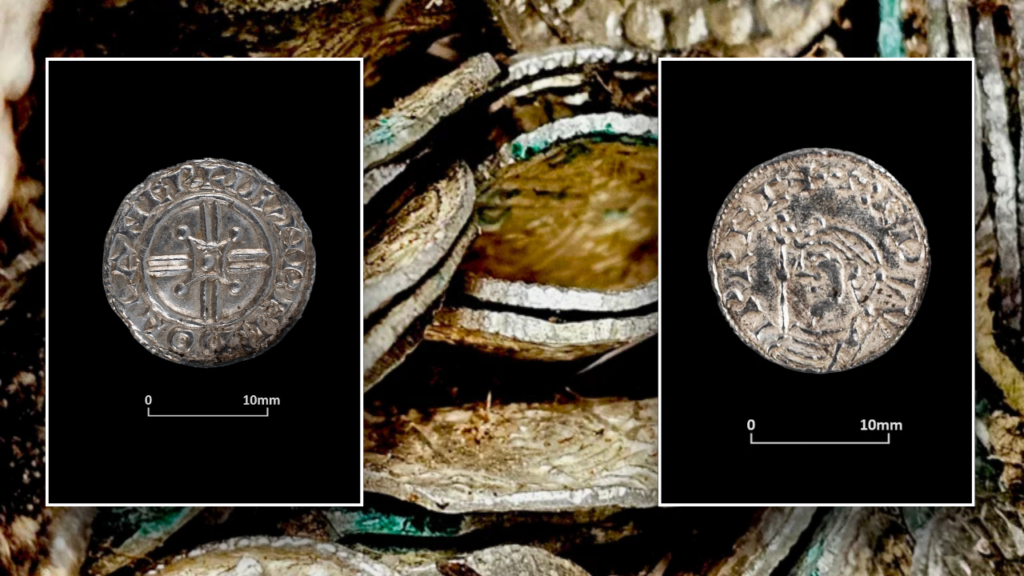In an extraordinary archaeological discovery, researchers in the United Kingdom have uncovered a treasure trove of 1,000-year-old artifacts within the confines of a construction site for a nuclear power plant. This remarkable find, announced by Oxford Cotswold Archaeology (OCA) on January 7, 2025, includes a rare collection of 321 silver coins, with the archaeological site located at the Sizewell C nuclear power station in Suffolk, England. This discovery not only sheds light on ancient monetary practices but also opens a window into the complex socio-political landscapes of medieval England.
The silver coins, dating back between 1036 and 1044, provide historical context that predates significant historical events like the signing of the Magna Carta by nearly 200 years and the Battle of Hastings by mere decades. According to OCA, the coins were astonishingly discovered in “mint condition” housed within a unique package consisting of lead and cloth, which was intriguingly compared to a Cornish pasty. This packaging suggests careful preservation, with the deliberate placement of the coins hinting at their intentional concealment.
An important aspect of this discovery is tied to the historical context of the coins. The period in which they were minted was marked by a great deal of turbulence in English history, coinciding with the reigns of three kings from the House of Wessex—Harold I, Harthacnut, and Edward the Confessor. During this era, which was characterized by the political ramifications of the Danish crowns’ claim to the English throne and eventual Norman conquest, these coins played a vital role in the evolving English monetary system. For example, Harold I ruled from 1036 to 1040, followed by Harthacnut from 1040-1042, culminating in the reign of Edward the Confessor from 1042 until his death in January 1066.
The OCA postulated that the owner of this hoard might have been a victim of theft amid the regime changes that characterized that tumultuous period. The fear of losing one’s wealth during the change in leadership, especially during Edward’s coronation in 1043, could have prompted the owner to bury the coins as a safeguard. Evidence suggests that many affluent individuals had their properties seized or were exiled after Edward’s ascendancy, indicating a societal atmosphere of turmoil and uncertainty.
Despite these coins representing a substantial amount of wealth at the time—valued at around 320 pence, which includes two halfpence coins—archaeologists emphasize that this hoard likely belonged to a person of local prominence rather than someone of national significance or outright royalty. The OCA elaborated on this notion, explaining that this treasure would be more akin to the savings of an affluent property owner or wealthy farmer, indicative of local economic status rather than royal wealth.
In terms of present-day economics, linking historical values to modern purchasing power is an arduous undertaking. However, OCA provided some metrics, noting that law codes from the 10th and 11th centuries indicated a cow’s value hovered around 20 pence. Thus, this hoard potentially represented enough wealth to acquire a modest herd of 16 cattle, painting a clearer picture of its economic significance during that historical period.
The final commentary on the findings was provided by OCA coin specialist Alexander Bliss, who emphasized the intricate interdisciplinary collaboration required to analyze the hoard. He stated that the discovery enriches our understanding of the socio-economic context of the period leading up to Edward the Confessor’s reign, and how various societal classes were impacted by the shifting power dynamics. Bliss expressed his honor at being part of a project that contributes significant historical narratives to our understanding of England’s rich and complex past.
Overall, this fascinating find not only enriches the historical fabric of 11th-century England but also highlights the crucial role of archaeology in uncovering narratives that have been buried for centuries.











